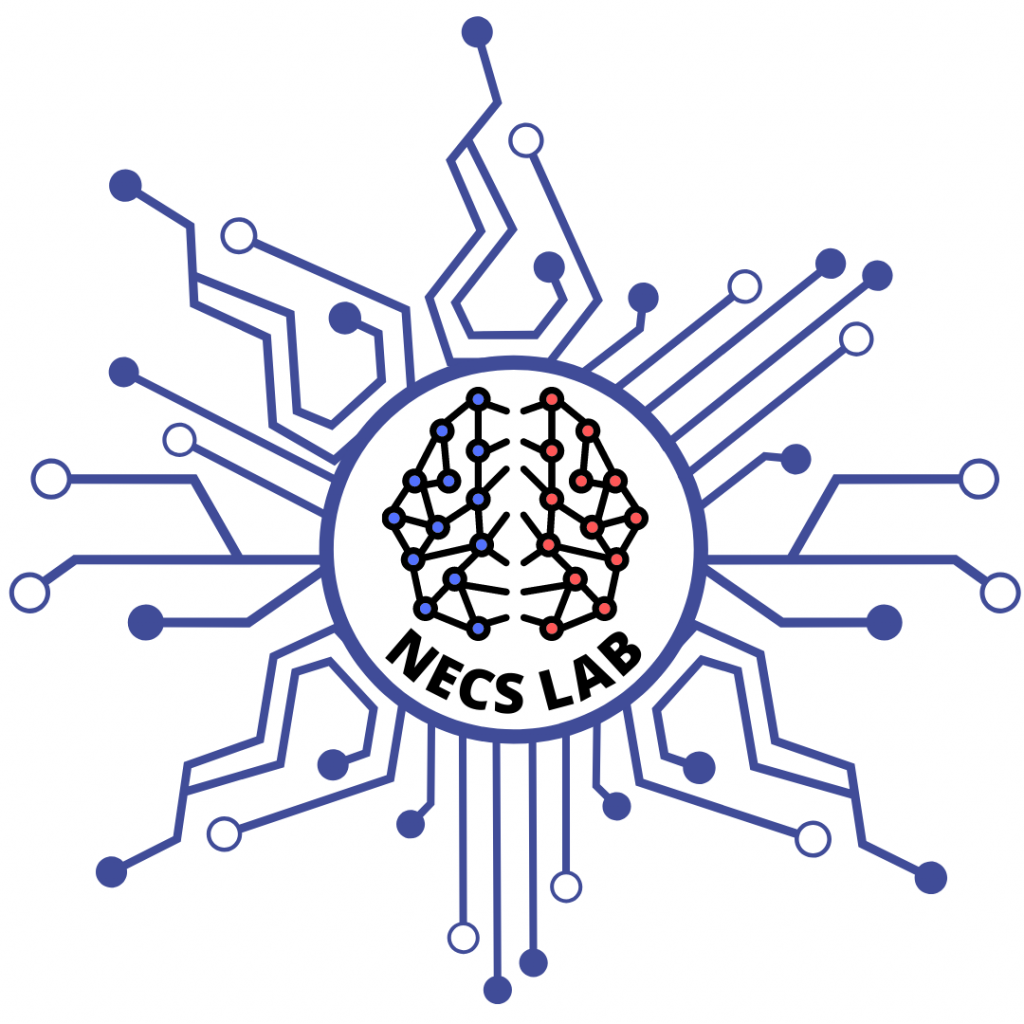My mission
“My long-term research goal is to enable intelligence inside our microchips by designing neuromorphic circuits and systems that mimic the brain’s fundamental information processing strategies for solving challenging real-world problems.”
Long Term Vision
Emerging applications like brain-computer interfaces, health monitoring, intelligent robotics, and the Internet of Things demand greater computing capabilities in miniature microchips while also prioritizing energy efficiency and data processing efficiency. Traditional methods of performance scaling, particularly at the microelectronic hardware level, have shown some improvements over the past few decades, but they are approaching their limits. Looking ahead, to surpass the constraints of physical scaling, it is imperative to explore innovative technological solutions alongside fresh computational models.
The Neuromorphic Edge Computing Systems (NECS) Lab

The Neuromorphic Edge Computing Systems Lab is dedicated to developing computing algorithms, circuits, systems, and architectures for emerging applications and a more environmentally friendly computing landscape.
Our research spans the entire computing spectrum, from reimagining computation models to designing hardware solutions. We draw inspiration from the brain’s efficiency and explore neural-inspired computation models that operate with high parallelism, on-demand processing, and leverage cutting-edge nano- and microelectronics technologies to create innovative neuromorphic computing systems with the potential to revolutionize the computing field.
Research Activities
The NECS Lab specializes in research aimed at infusing intelligence into edge devices, which are computing devices located close to the data source and in the physical world rather than in a centralized data center. This intelligence manifests in various forms: adaptability, robustness, extended lifespan, online learning, determined recognition, and explainability. Our research focuses on optimizing performance and managing energy consumption for specific machine intelligence tasks by designing algorithms and hardware collaboratively. In addition, we design neuromorphic devices using Complementary Metal-Oxide-Semiconductor (CMOS) Very Large Scale Integrated (VLSI) technology, empowering them with in-memory and near-memory computing capabilities to emulate biologically-inspired spiking neural networks connected by learning synapses.
Get in touch with the NECS Lab at the Eindhoven University of Technology
Phone: +31 (0)40 247 2556
Email: f.corradi [at] tue.nl
Address: Department of Electrical Engineering, Flux, room 4.130, 5612 AP Eindhoven, The Netherlands
Address: Show on Map
PO BOX: 513, 5600 MB Eindhoven